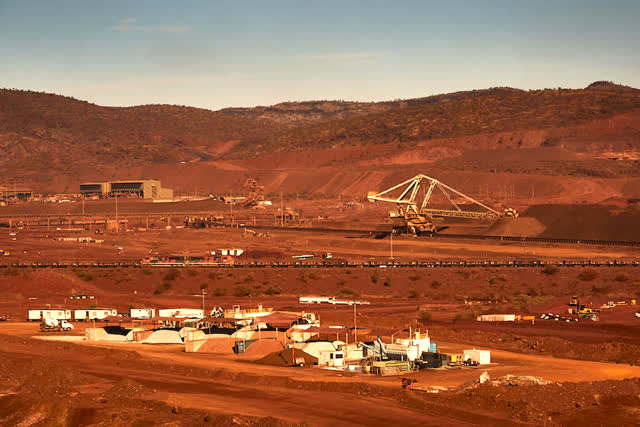Thesis
BHP Group's (BBL) share price has had a turbulent run during the past 6 months. The share price touched its 52-week lows of $23.64 following the COVID-19-triggered market crash in mid-March and has recovered since then. As BHP is a mining giant that's invested heavily in multiple significant business segments, including petroleum, copper, iron ore, coal, and nickel, a detailed analysis of BBL's each and every business segment is beyond the scope of a single article. That said, the focus of this article's discussion will be BBL's two most significant business segments namely iron ore and copper.
In this article, we will try to analyze whether (and how) BBL's stock price could build an upward trajectory from the current price levels, given its current business environment, and will also take a look at the company's competitive position compared with a peer mining giant, Rio Tinto (RIO). So, let's get into the details without further ado.
 Figure-1 (Source: Mining.com)
Figure-1 (Source: Mining.com)
Business Segment: Iron Ore
H1 2020: BBL's 'Iron Ore' business segment accounted for 60% of the Group's EBITDA during H1 2020, and generated the single highest EBITDA margin (of 69%) among BBL's business segments. This segment also provides the highest ROCE (read: return on capital employed) of ~50% as against 9%, 13%, and 15% for copper, metallurgical coal, and petroleum, respectively, during H1. The segment's strong performance is explained by high-end, low-cost production. To put that into context, the segment's H1 2020 production costs came out at US$13.03/t (which was at the lower end of the FY 2020 guidance range between $13 and 14/ton) compared with market prices that varied between $90 and 120/t during H1 2020.
Year-to-date ended March 2020: During the 9-months ended on March 31, 2020, BBL's attributable iron ore production from its WAIO (read: Western Australian Iron Ore) business came out at